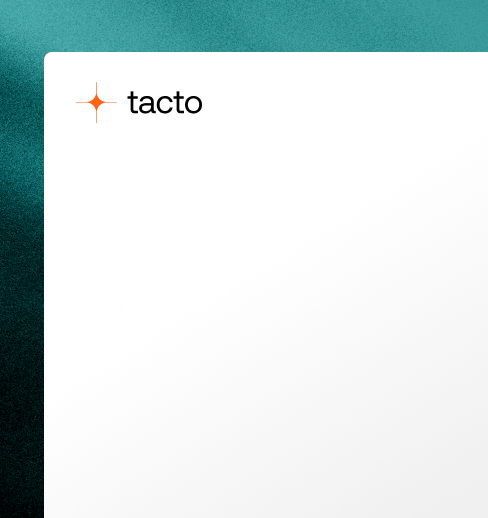Procurement Glossary
Purchasing levers: definition & important aspects for buyers
Do you want to take your purchasing processes to the next level and achieve cost savings? In this article, we explain how you can not only save money with the right purchasing levers, but also future-proof your procurement. Discover practical examples of how other companies have optimized their purchasing processes and the benefits you can achieve through clever purchasing strategies.
What are purchasing levers?
Purchasing levers are practical methods and strategies that companies can use to improve their purchasing and save costs. The most important levers are, for example, bundling orders into larger quantities, selecting the right suppliers or simplifying product variants. These tools help companies not only to save money, but also to achieve better quality and work more efficiently.
In practice, companies use purchasing levers on a daily basis to strengthen their position in the market and make smart purchasing decisions. One important lever, for example, is the joint procure of several departments, which allows larger quantities to be ordered and better prices to be achieved. The global search for the best suppliers also plays a major role, as this allows companies to benefit from different prices and innovations. By regularly evaluating and developing supplier relationships, companies can build long-term partnerships that benefit both parties. Modern technologies such as special purchasing software or artificial intelligence help to make even better use of these levers and improve Procurement step by step.
What can purchasing levers be?
Volume-related leverage:
- Bundle order quantities
- Use framework agreements
- Combining the requirements of different locations
- Group-wide purchasing volumes
Supplier-related levers:
Process-related levers:
- E-procurement systems
- Automated ordering processes
- Digital invoice processing
- Standardized processes
Purchasing levers example: How order bundling realizes 6-digit savings for mid-sized companies
A machine manufacturer with 250 employees discovered that it was previously ordering standard components such as screws, seals and ball bearings for its production lines in an uncoordinated manner via different departments. Each of the five production lines ordered smaller quantities every two months on average, resulting in a total of 30 separate ordering processes per year.
After a thorough analysis of the consumption data, the company introduced a new ordering system. Instead of many individual orders, the requirements of all departments were bundled and a large order was only placed every six months. The higher order quantities enabled the machine manufacturer to achieve the following benefits:
- Price reduction of 22% through volume discounts for bulk orders
- Reduction of shipping costs by 75% (from €12,000 to €3,000 per year)
- Reduction of administrative work from 30 to 4 order processes per year, which reduced process costs by €8,500 per year
- Improved stock overview and reduction of emergency orders by 90%
- Stronger negotiating position with suppliers thanks to higher order volumes
In order to successfully implement this bundling, the company invested €15,000 in a digital supplier relationship management system and €20,000 in an analytics tool for Procurement. This investment paid for itself after just 8 months thanks to the savings achieved. The predictable consumption of standard parts made it possible to plan stock levels optimally and still guarantee 100% security of supply.
The total savings from bundling orders amount to around €45,000 per year, which corresponds to an 18% reduction in procurement costs for standard components.
Purchasing levers Example: Global sourcing as a strategy for savings and innovation
A German tool manufacturer with 180 employees, specializing in precision tools for metalworking, traditionally sourced its raw materials (mainly special steels and carbides) exclusively from German, French or North American suppliers. Rising material costs and international competitive pressure led to the decision to implement a more global sourcing strategy.
Thanks to modern RFX applications and analytics tools specifically for Procurement, the tool manufacturer was able to work out various options in a very short time.
Following additional market research and supplier audits in Asia and Eastern Europe, the company developed an international procurement network. This enabled the tool manufacturer to realize the following advantages:
- Reduction in material costs by 31% thanks to lower purchase prices while maintaining the same quality
- Development of innovative production technologies by a Taiwanese partner, which led to a 15% improvement in own product quality
- Establishment of a diversified supplier network with two qualified suppliers for each main material to minimize risk
- Total production costs reduced by 22%, which significantly increased competitiveness
- Development of new sales markets in Asia through the business relationships established (sales increase of € 1.2 million in the first year)
The implementation of the global sourcing strategy required investments of €125,000, mainly for:
- Market analyses and travel expenses (€45,000)
- Quality assurance systems (€35,000)
- Employee training (€25,000)
- Adaptation of the IT systems (€20,000)
The initial challenges, such as longer delivery times (on average 4 weeks longer) and increased quality inspection costs, were successfully overcome by adapting order cycles and automating quality assurance processes. The amortization period for the investments was 9 months.
The total annual savings from global sourcing amount to around €680,000, which corresponds to an increase in return on sales of 2.8 percentage points.
What are the advantages of the purchasing levers?
Cost savings:
- Reduced purchase prices due to volume advantages
- Lower overall process costs
- Optimized storage and logistics costs
Quality improvement:
- Higher product and delivery quality
- Fewer errors and complaints
- Better process reliability
Strategic advantages:
- Stronger market position
- Reliable supplier partnerships
- Better access to innovations
Increased efficiency:
- Simplified, standardized processes
- Increased transparency
- Better planning and control
Purchasing levers: from traditional measures to strategic sourcing
The use of purchasing levers is crucial in order to reduce costs and exploit value creation potential in an increasingly competitive market. Based on the theoretical foundation of purchasing levers, companies are recognizing the need to transform their purchasing strategy. Traditional methods are reaching their limits, which is why modern approaches are required to increase efficiency and effectiveness in Procurement .
Traditional approach: Traditional purchasing practices
In traditional Procurement , companies mainly focused on price negotiations and volume discounts without looking at the overall procurement picture. Procurement departments often worked in isolation, with little transparency and limited communication with other parts of the business. Tools were mostly manual, such as Excel spreadsheets or paper documents, which led to inefficient processes. The main focus was on short-term cost savings, while long-term strategic benefits were neglected. This led to challenges such as delivery bottlenecks, quality problems and a lack of innovation.
New: Strategic sourcing
The modern approach of strategic sourcing is revolutionizing Procurement by taking a holistic view of procurement activities. Advanced technologies such as e-procurement systems and AI-supported analyses are used to make data-driven decisions. Companies develop long-term partnerships with suppliers, integrate them into development processes at an early stage and promote joint innovations. Value analysis and continuous supplier development can reduce costs by up to 20% and shorten time-to-market. This approach increases flexibility, minimizes risks and strengthens competitiveness.
Conclusion on purchasing levers
The systematic use of purchasing levers has become indispensable in modern procurement, as it has been proven to lead to significant cost savings, better quality and more efficient processes. By using modern IT systems such as SRM (Supplier Relationship Management) software and analytics tools in particular, companies can exploit the full potential of their purchasing levers by intelligently bundling requirements, strategically managing suppliers and automating processes. The resulting transparency and data quality enables buyers to make informed decisions and identify potential savings at an early stage. Without the support of these digital tools, effective implementation of purchasing levers is hardly possible in today's complex procurement world, which is why companies should continuously invest in their digital procurement infrastructure.







.png)
.png)
.png)
%20%E2%80%93%20Jakob%2C%20Ines.png)
%20%E2%80%93%20Jan%2C%20Jacob.png)
.png)
.png)
